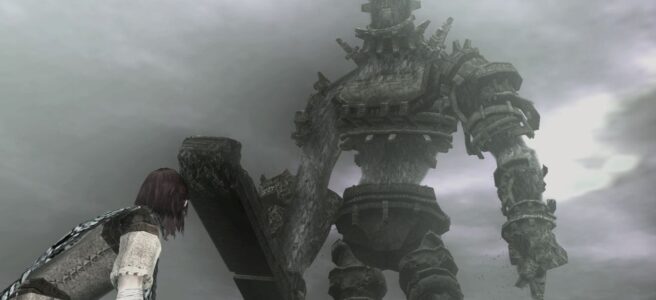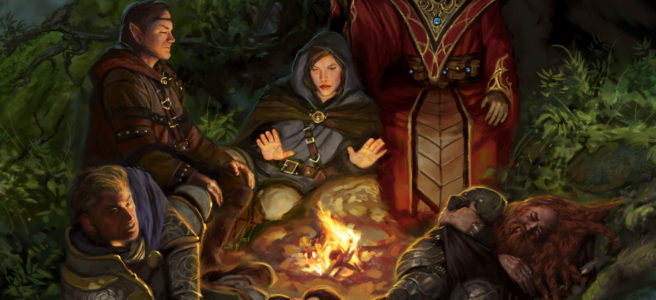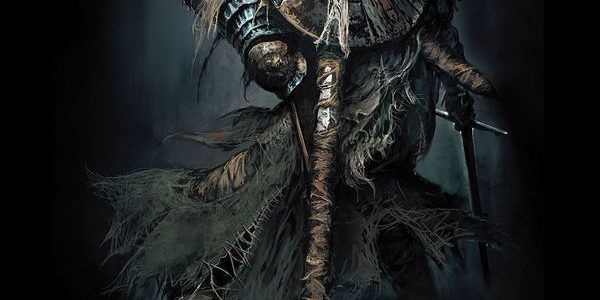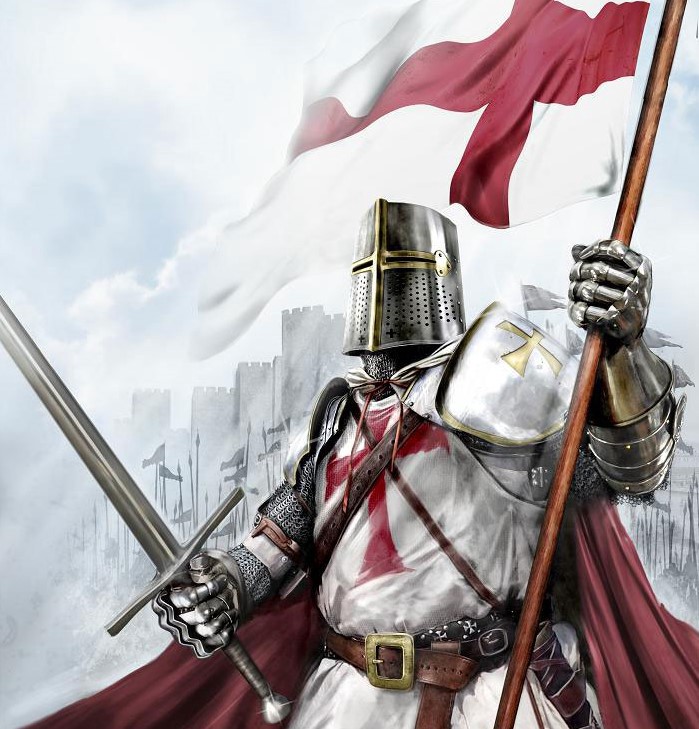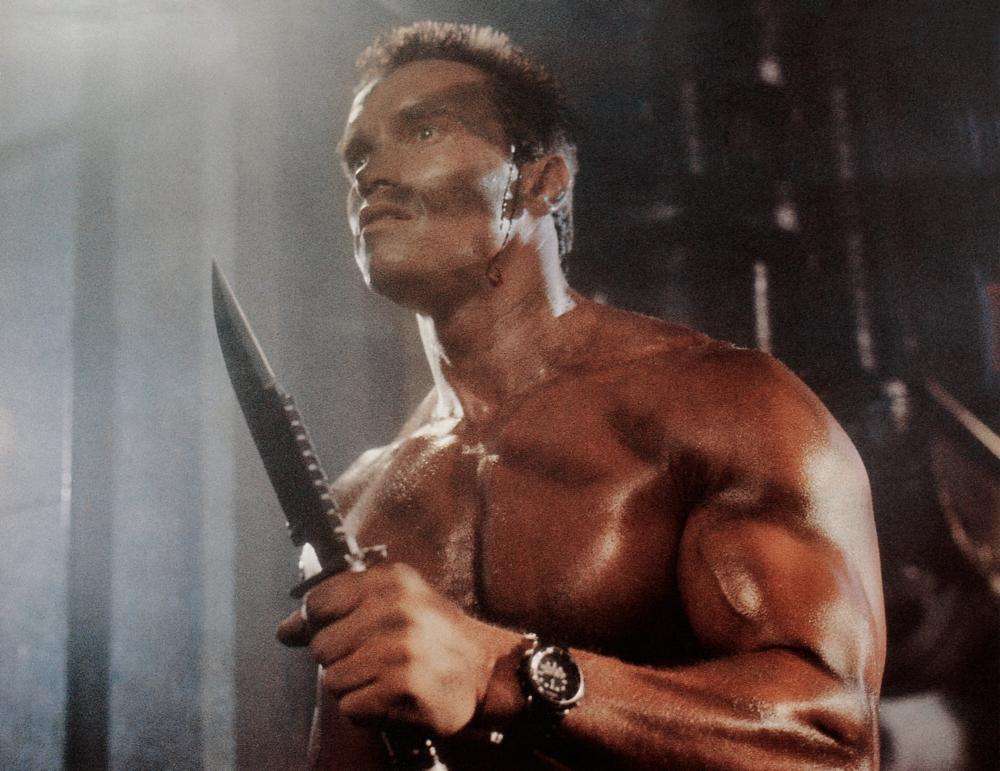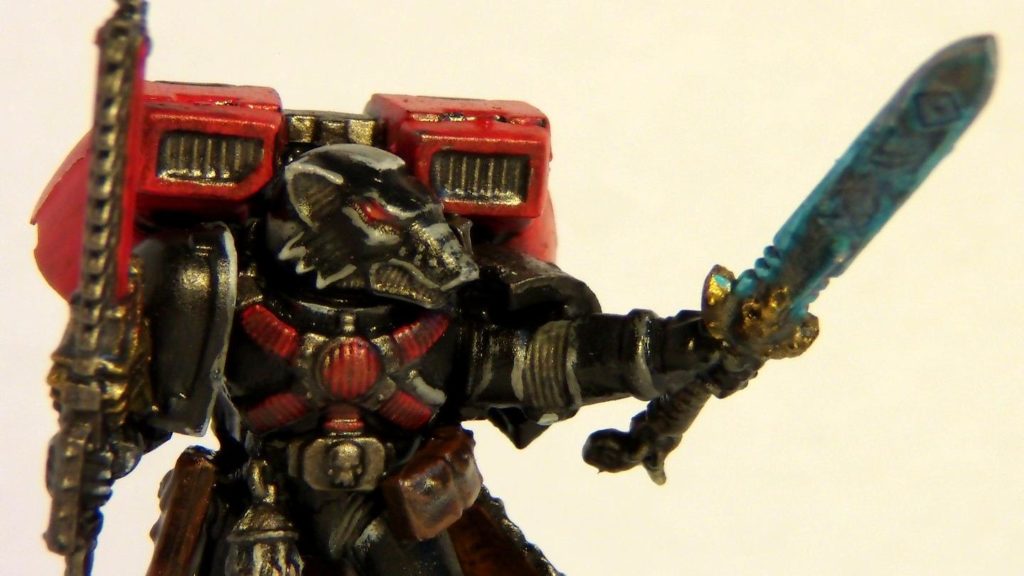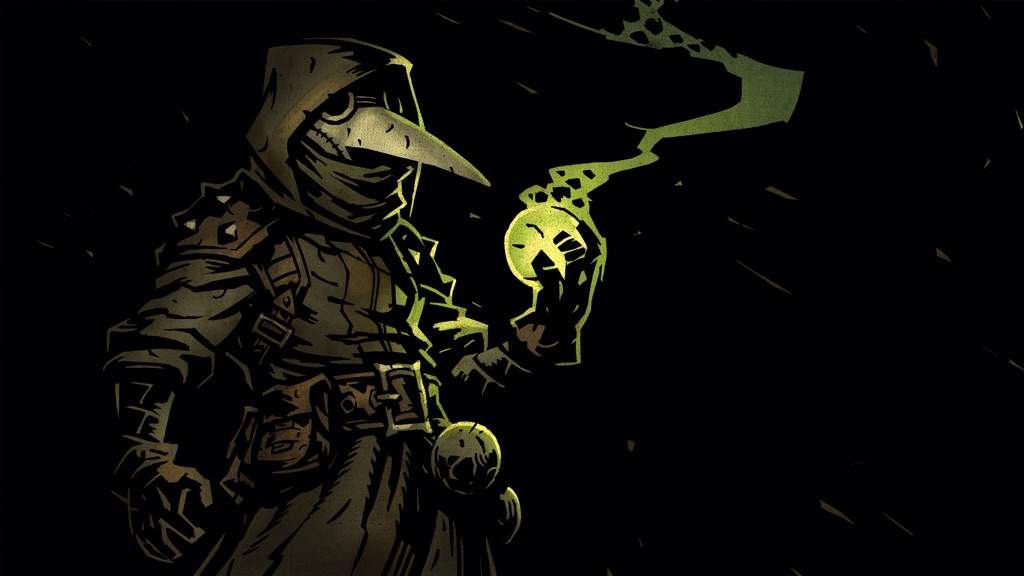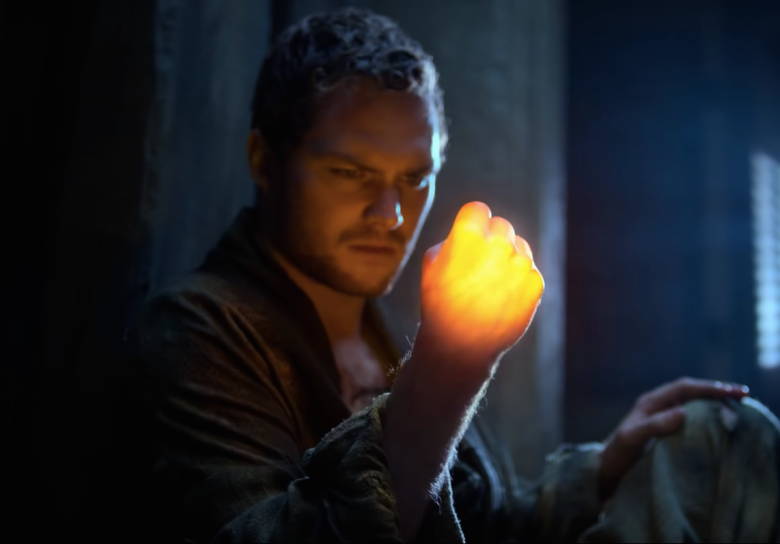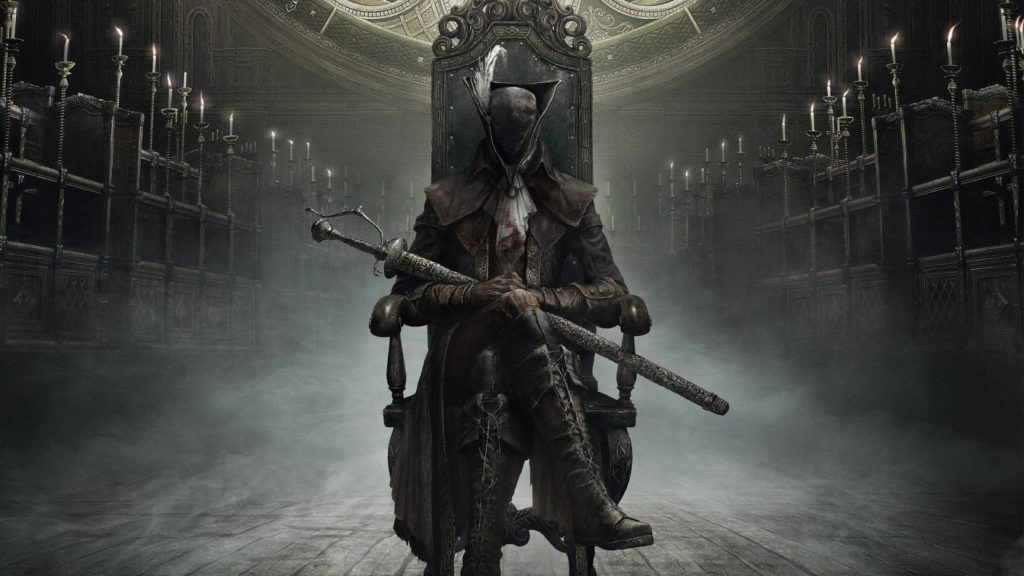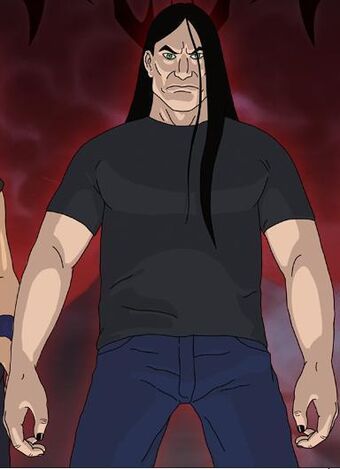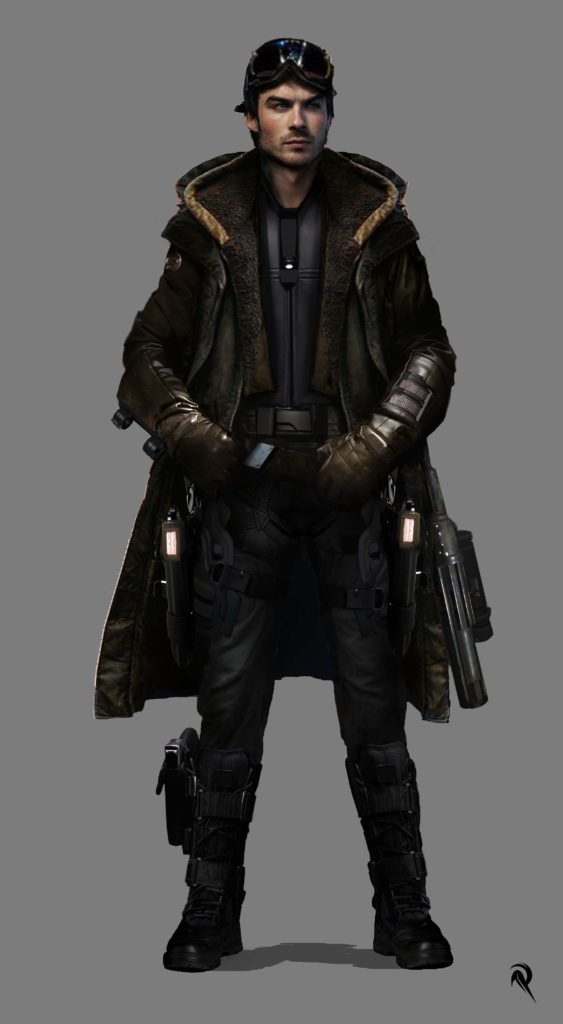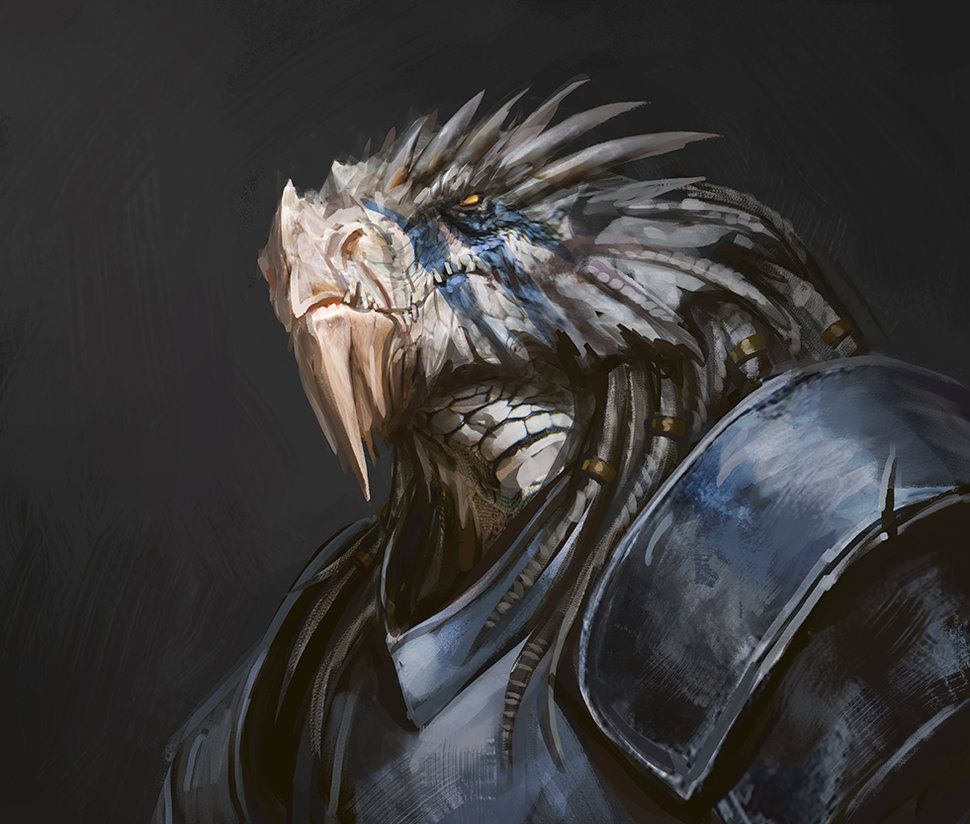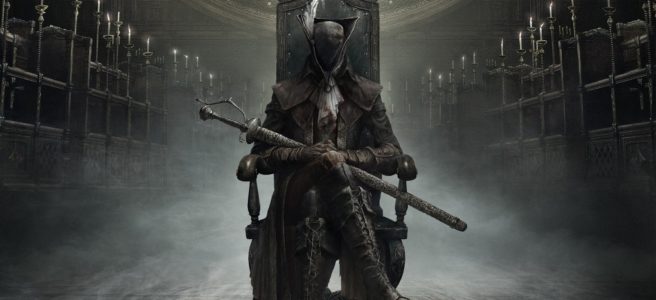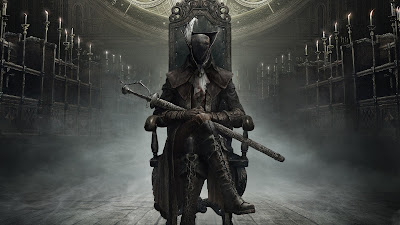25. Star Wars: Knights of the Old Republic (2003, PC)
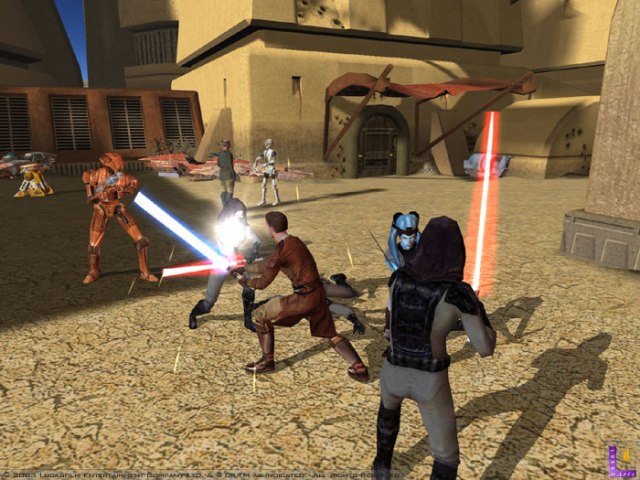
Knights of the Old Republic has some of the best writing in all of Star Wars. Back when Disney bought Star Wars and everyone was still excited about the possibilities of new movies, I had a pretty simple request: adapt Knights of the Old Republic to film. You could adapt this game’s script with little changes required and it would be a hit (assuming they didn’t screw up in the execution). The twists would be able to land too, because most mainstream Star Wars fans haven’t played it, so it would still have impact. Oh, and most importantly, adapting KOTOR would not ruin the ending of Return of the Jedi and piss off the fanbase.

KOTOR is just the ultimate union of Star Wars fantasy and Bioware RPG gameplay. Customizing your character and slowly developing their Force powers and lightsaber over the course of the game is awesome. The real-time with pause combat is simple, but flashy in-motion. Seeing what the Star Wars universe was like long before the original trilogy is fascinating. The way that your affinity towards the Dark and Light sides of the Force affects your character, your companions, and the way the story plays out. If you love Star Wars, then you owe it to yourself to give KOTOR a try.
24. Sly Cooper and the Thievius Raccoonus (2002, PS2)
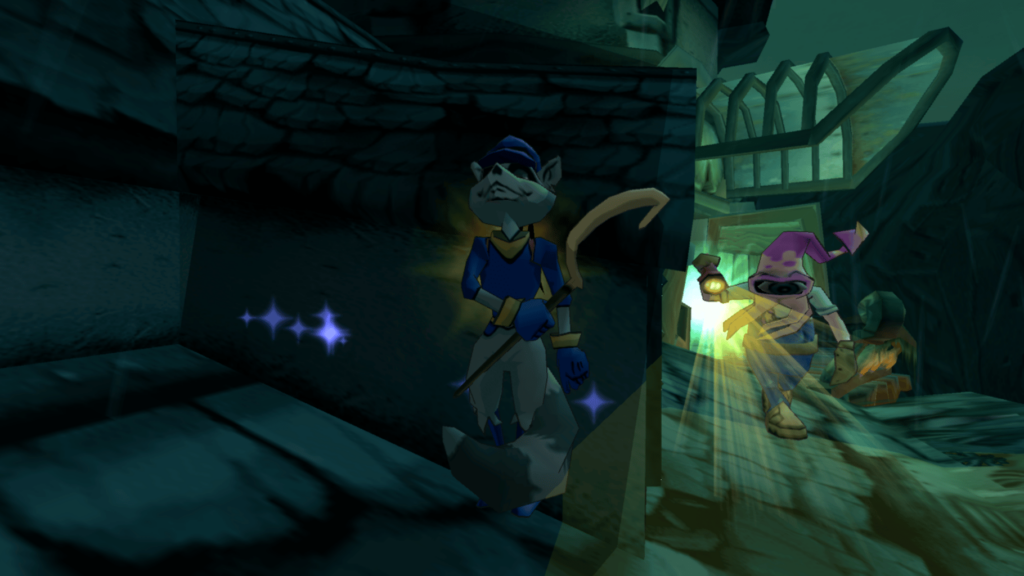
Another one of those games that was bought for me as a gift and that I wasn’t too interested in until I started playing, Sly Cooper is a fantastic blend of 3D platforming and stealth gameplay. In order to emphasize stealth, Sly (and most enemies you face) will die in one hit. This might sound rough, but the game is balanced around it and it feels very fair – if you are being sneaky, then you should have the upper-hand in every encounter. In fact, I actually prefer this system over Sly‘s sequels, which give everyone health bars… presumably because it is more “expected”? I guess it makes combat have a bit more depth? Whatever the case, combat isn’t really the focus of these games and I much prefer the snappier system in place here.
Like many 3D platformers of the day, Sly Cooper features collect-a-thon elements, but they aren’t just here to give you something arbitrary to do. Levels are littered with coins to steal, which will net you lucky charms (which allow you to take up to two hits before dying) or extra lives. You also collect bottles containing pages of the titular Thievius Raccoonus, which will eventually unlock really useful new moves and abilities that you can use, such as slowing time or creating a decoy to distract enemies.
So the core gameplay of Sly Cooper is rock solid, but the game’s presentation, characters, and story really elevate it. The game has a cartoonish, 50s noir style which is complemented by its cel-shaded graphics which have aged very well. The characters aren’t revelatory, but they’re fun: Sly’s your charming rogue, Bentley’s the high-strung brains of the operation, Murray’s the dumb-but-eternally-loyal and eager getaway driver, and Carmelita is the cop who will stop at nothing to put Sly behind bars… but is her obsession purely professional…? The whole thing is wrapped around a plot which is just perfect for video games: Sly comes from a line of master thieves who have recorded the techniques they have developed in the Thievius Raccoonus, but the book is stolen and his family murdered by a group of rival thieves called the Fiendish Five. Sly and his friends then need to reclaim his family’s knowledge and get revenge on the Fiendish Five. It’s a fairly simple setup, but compelling. Sly Cooper is just an extremely well thought-out video game: everything has been carefully considered and maximized to make Sly Cooper the best it can be.
23. Sly 3: Honor Among Thieves (2005, PS2)
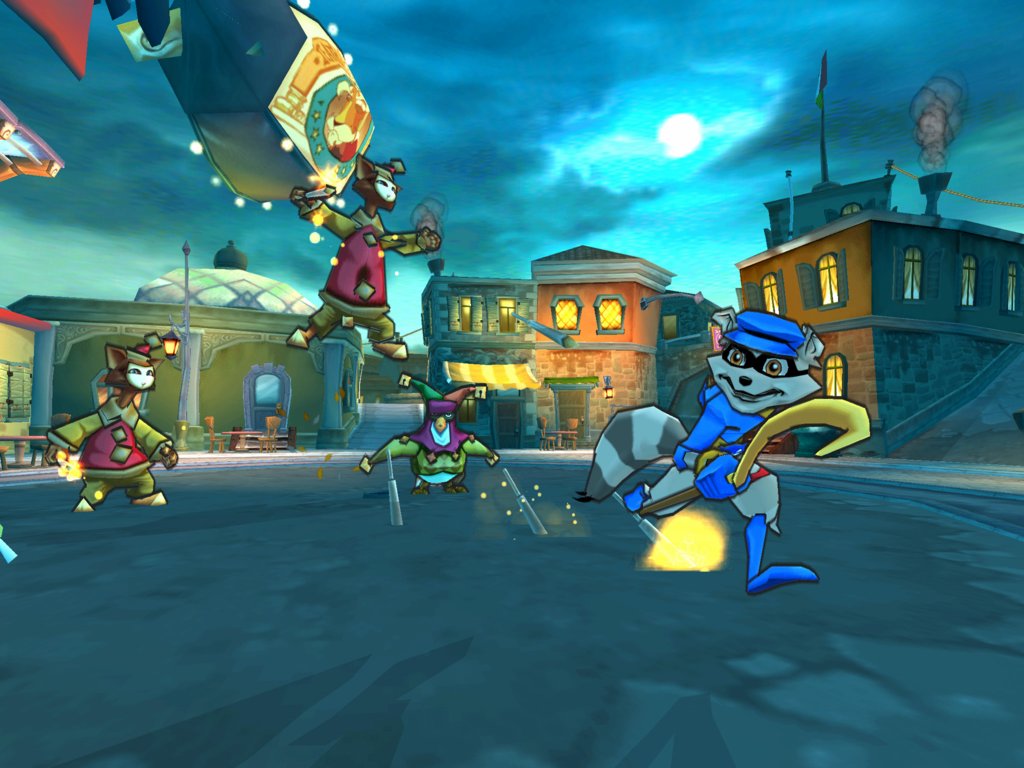
Sly 3 doesn’t evolve the formula of the franchise very much: gameplay-wise, it’s more of what was established in Sly 2 (basically: Bentley and Murray are new playable characters, the one-hit-kill system is gone, stealth is de-emphasized, and guards can be pickpocketed for easy cash for upgrades). What really makes Sly 3 stand out is its exemplary writing, which builds upon all the developments made over the course of the trilogy. In this game, Sly is putting together a team to pull off a heist against Dr. M, who has taken over the island housing the Cooper family vault. Dr. M has been attempting to break inside to steal the generations of hoarded treasure held within. It seems like a pretty simple setup, but there are some major revelations and developments which twist the way we view our characters and the Cooper family in surprising ways. We also get several returning characters from the previous two games, some of which have undergone major developments. Most notable of these is Panda King, one of the Fiendish Five who killed Sly’s parents. The gang finds themselves having to recruit Panda King in order to successfully pull off the heist, but the tension between Sly and him is so taut that feels like it could snap at any moment. It is great writing, daring to take the difficult route, and the game is so much more rewarding for it. Dr. M is also a surprisingly complex villain, who I’d argue is the best antagonist in the franchise. Building up the gang and then executing this final heist makes for one of the most enjoyable game stories in its own right, but when you combine that with the things this game is doing as a trilogy-ender, it is a monumental achievement.
22. Ninja Gaiden (2004, XB)
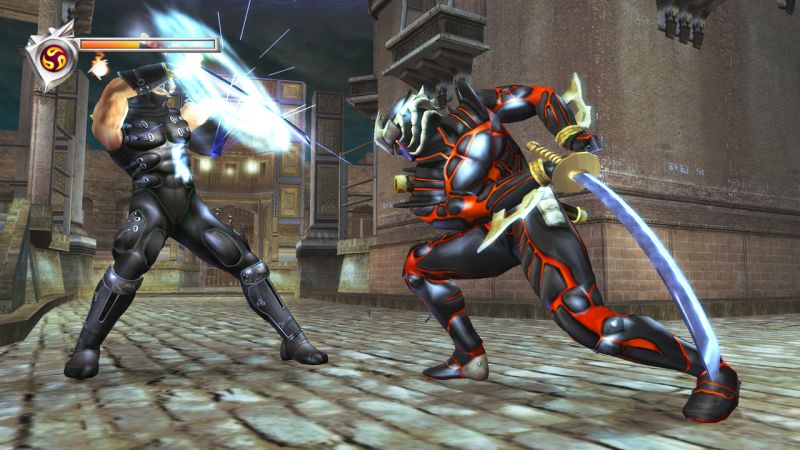
Ninja Gaiden is notorious for its difficulty, demanding precision and quick reflexes to survive on higher difficulties. The game’s hero, Ryu Hayabusa, is a demon-slaying ninja badass and one of the coolest game heroes around. The story is functional by video game standards: Ryu needs to get back the Dark Dragon Blade, which was stolen from the Hayabusa ninja clan by the Vigoor Empire, all while battling ninjas, Fiends, and the Black Spider Clan. That’s right… there’s actually a game in my top one hundred which is here purely because of the gameplay. Ninja Gaiden‘s harsh challenge is tough, but fair, demanding that you learn its systems if you want to succeed. When you do overcome a fight that has been challenging you, the feeling of satisfaction is palpable, and the the fight is all the more manageable for it. Something I like about this game in particular which makes it stand out from its sequels is the hub-based world. For most of the game, you explore the streets of Tairon, battling enemies as you gain access to new areas and uncover some cleverly-disguised secrets that only a true ninja could perceive. I know that it’s been said before about this game, but it really does bear saying: Ninja Gaiden makes you feel like a true ninja badass and is well worth experiencing if you can stomach the challenge.
21. Bioshock (2007, PS3)
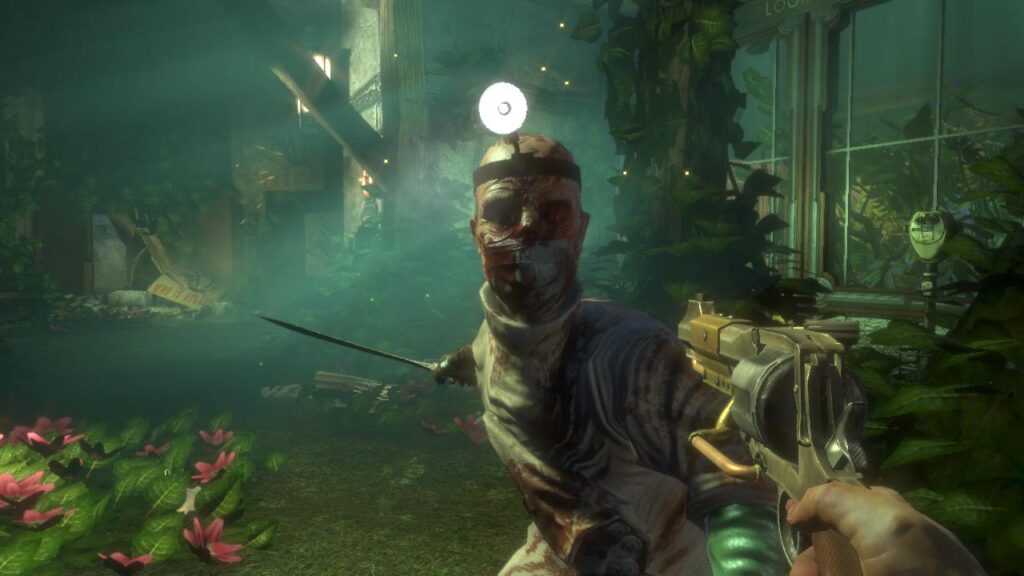
Whenever I recount my time with Bioshock, I always go back to the very first thing that happened to me in the game. You have an extremely brief opening cutscene where your plane crashes into the ocean and your character rises to the surface of the water to see flames from the wreckage. I sat there a good twenty seconds or more, expecting some object to come into frame from off-screen. Then it hit me: No… these are the in-game graphics!? The reflection of the fire on the water looked so good that I literally thought it was a CGI cutscene. The game was that immersive at its very first second. Then you travel down into the undersea city of Rapture and your mind is in absolute awe of what you are seeing. An art deco, undersea, libertarian dystopia is such a unique setting. And then the horror elements creep in, as you see what has become of the city and its denizens. By that point, you are just fully invested in Bioshock‘s atmosphere: this is just the coolest world design in videogames. It also, quite famously, has some of the best writing in any game of the time, being philosophical while also keeping it entertaining. It also has one of the best twists in gaming, a mind-blowing revelation that makes you re-evaluate your sense of self. And then there’s the plasmid powers you collect and upgrade during your journey which shake up the gunplay in unique ways.
Oh, and who could ever forget the first time they saw a Big Daddy? How about the sheer terror the first time you had to kill one? This game is fantastic, full-stop.
20. Metal Gear Solid (1998, PS1)
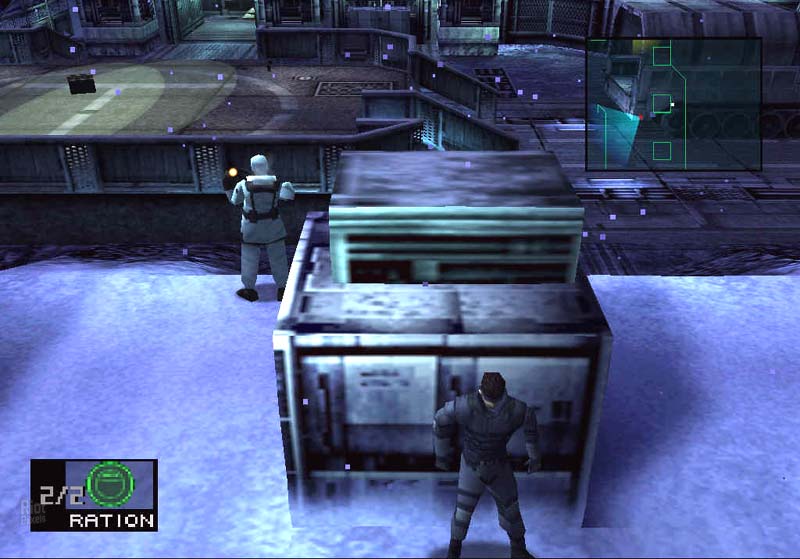
Since release, Metal Gear Solid has rightly been praised for pushing the boundaries of cinematics and storytelling in videogames. It’s a staggering achievement for a PS1 game, boundlessly creative and quirky in equal measures. There’s so many legendary moments in this game, that I’m not even sure it makes sense for me to recount them: you either know about them already, or you need to experience them for yourself. So, instead, I’m gonna use this space to describe my introduction to Metal Gear Solid…
This was a game that I had heard about while growing up. I was really into gaming magazines around 2001. One of the first gaming magazines I bought was the Metal Gear Solid 2 cover story for The Official US Playstation Magazine, which really hammered home to me that these games were must-plays (I can still remember their guide on how to fake being sick to get a whole extra-long weekend off to play it). They all sang the praises of the Metal Gear franchise, and they said that Metal Gear Solid was the best one. That said, I wasn’t able to play them at the time: I was eleven when MGS2 came out, I was not allowed to play any M-rated video games, and I didn’t have any money to get them myself.
Around 2005 or 2006, I had fallen in love with the stealth action genre after playing all of the Splinter Cell released to that point. I was itching for some more top-tier stealth games, so obviously Metal Gear Solid was at the front of my mind. I managed to get a ROM of Metal Gear Solid, which I played on an emulator on my PC. I’ll tell ya, over the course of the next few evenings, my mind was blown. I loved the over-the-top action and characters. I loved the equally philosophical and farcical narrative. The presentation was incredible. I loved the insane, fourth-wall breaking gameplay moments. The boss fights were incredibly unique. It was just such a good experience that I started checking out the other games in the franchise as well, and soon Metal Gear Solid was even more important to me than Splinter Cell itself.
19. Shadow of the Colossus (2005, PS2)

Another one of those “early, undeniable examples of games as art” games, Shadow of the Colossus is unrivalled in its atmosphere. The colossi are these majestic, sombre beasts who you have been tasked to slay in order to resurrect an mysterious woman. The resulting journey is nearly wordless, which just absolutely sucks you into this game’s world. Each colossi is not fought in the traditional sense: they are all have a fairly simple puzzle based around their movements which, once solved, will allow you to climb onto their body and stab a weak point until the beast dies. Each colossi is unique and memorable, and the minimalist story really packs an emotional wallop. It’s just such an impactful and artfully-crafted videogame, you just can’t help but be in awe of the talent on display here.
18. Nioh (2017, PS4)
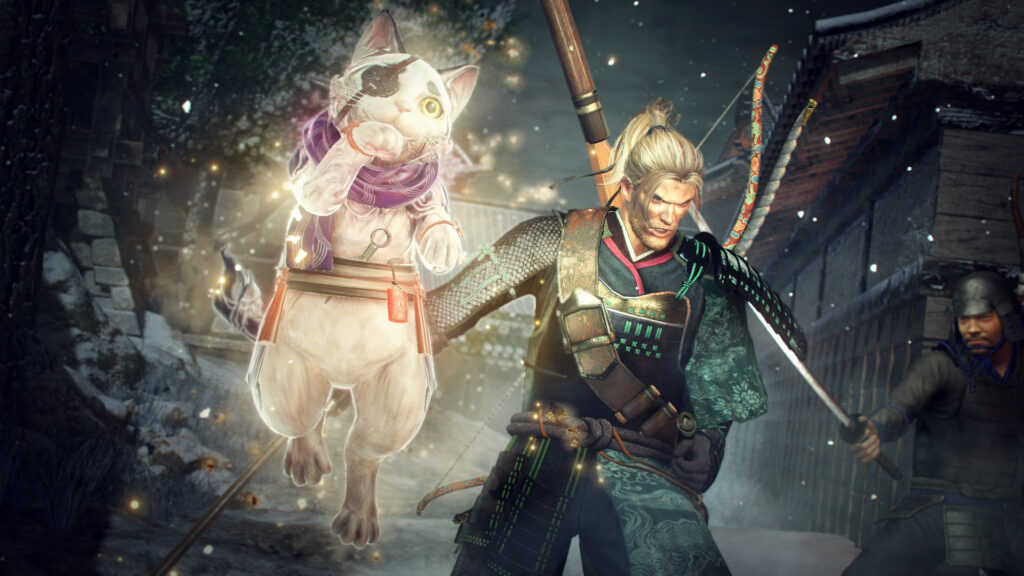
Once again, Team Ninja have an entry that I love entirely for the gameplay. Nioh has the best combat system of any game I have played, bar none. It plays largely the same as any other Souls-like: a stamina bar, challenging difficulty, if you die you lose your souls, etc. The main differences are that Nioh has a loot-based item drop system and that the game is linear and mission-based, rather than having you seamlessly navigating an open world. However, Nioh introduces two mechanics that shake up the Souls formula in some genius ways:
- Weapon Stances – Each weapon you get has three stances for your attacks: high for a slow, powerful attack, mid for a standard attack, and low for a quick, weak attack. Right away, this wildly expands the options you have at your disposal for any given combat encounter, but certain enemies are also immune or vulnerable to specific stances.
- Ki-Pulse – Nioh has a sort of “active reload” system to instantly replenish your stamina bar if you time a button press correctly. You will quickly get to grips with this maneuver when you play, it makes for a really cool system where you encourage aggressive combat maneuvers in order to maximize your damage dealt.
The game also retains Team Ninja’s pedigree for difficulty. In that quality, Nioh definitely stands out compared to its peers, with a level of precision required that rivals Ninja Gaiden. And I just love the guardian spirits, a charming gang of adorable, magic spirit creatures that give you special powers if you become friends with them. Nioh is just a great game to play, constantly pushing your limit and forcing you to get better.
17. Halo 2 (2004, XB)
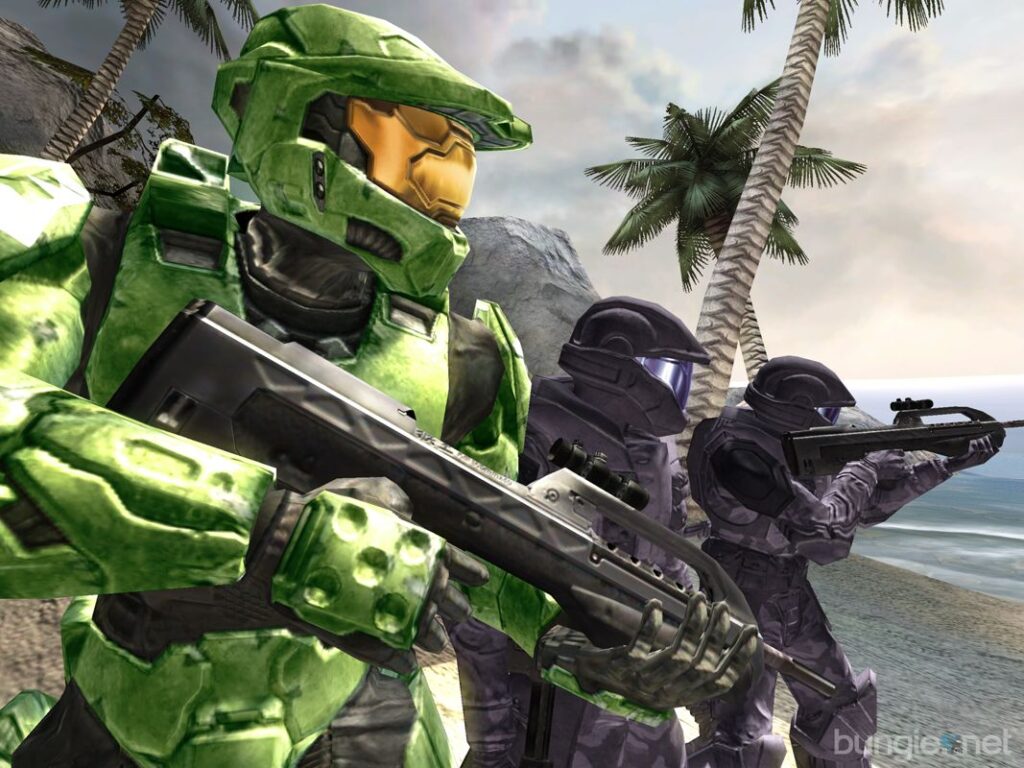
Halo holds a special place in my heart. Some of my fondest gaming memories are playing Halo and Halo 2 at a couple youth group LAN parties as a young teenager. I loved the first few Halo books. The writing and world-building was (and still is) top notch. Despite this, I didn’t have an Xbox or a decent PC growing up. So, when the LAN parties stopped happening, I never really got a chance to play them again. I did, briefly, have an Xbox 360 and I attempted to play through Combat Evolved a couple times, but found that I didn’t like the game’s design. As a result, I never made it to trying Halo 2.
Fast-forward to a earlier this year. The Master Chief Collection was on sale for cheap on Steam, and I finally have a PC capable of playing it. Fuckin’ sold, that was an awesome deal. Once again, I found myself growing tired of Combat Evolved‘s design, but I forced myself through. Even then, it took me a couple months to get through to the end.
But then I started Halo 2. MY GOD, the sheer leap forward in every single way is spectacular. The story presentation and writing are legitimately film-like. The level design is much clearer and more distinct. Gameplay is improved in every regard. Dual-wielding guns is such a power trip. Even the small changes to the shields system make you feel more like a badass than before. I would turn off Combat Evolved after one or two levels, but for Halo 2 I blitzed through three levels back-to-back without breaking a sweat, and the only reason I didn’t go any further was because I badly needed to sleep. I got through Halo 2 in about a week, and loved it the whole way through.
16. Call of Duty 4: Modern Warfare (2007, PS3)

The release of Call of Duty 4 was a bomb-shell in the gaming industry. This one game effectively killed the World War II shooter, which had been a gaming staple for a decade. Suddenly, every shooter had to be a modern military game. Its set-piece moments were jaw-dropping and influenced countless imitators. Halo had been the top dog shooter up until that point, but then this game dropped and arena shooters were decimated. Given that we were still early in the Iraq War at the time, the game had an extra layer of relevance. At the time, this game felt kind of dangerous and daring for how much it invoked real-world politics. This also, of course, started the annual Call of Duty release schedule that we are all sick to death of now.
And, in spite of all that, Call of Duty 4 is still as incredible as ever. This game looked unbelievable back in 2007. The campaign was shockingly strong for a straight-forward shooter game, with memorable characters, cool set-pieces and some gut-wrenching moments. It’s the sort of game that demonstrates the effectiveness of a good, curated, linear campaign: the iconic “All Ghillied Up” is almost entirely scripted, but goddamn if it does not get your pulse pounding. You may be done with Call of Duty now, but anyone who was there for Call of Duty 4 knows that that game was (and still is) a singular experience.
15. Ape Escape (1999, PS1)

Of all the games that were bought for us as a gift that I didn’t have much interest in until I played it, Ape Escape is the best of them. My brothers and I got a PlayStation for Christmas in 2000 and Ape Escape was one of the games we got with it. We didn’t have a whole lot of interest at the time though: what, we’re trying to catch some monkeys? Eh, sounds boring. But then, being bored one day, I decided to try it out, and quickly got sucked in. Now, Ape Escape is my most-replayed game of all-time. I must have played through it at least seven times since I first bought it. Hell, one of the first things I did when I got my Retroid Pocket 4 Pro was to load Ape Escape onto it and then play through the whole thing again, which ultimately led to me writing the Ape Escape Love/Hate series.
The core 3D platforming gameplay of Ape Escape is solid, but what really makes it stand out is the innovative use of the (at the time) brand-new dual analog controller. The left stick controls movement and the right stick controls whatever gadget you currently have equipped, giving you a level of control and precision unseen in console games up to that point. The gadgets themselves are also really neat, with the stun baton to whack monkeys and enemies, the sling shooter to snipe distant targets, the sky flyer to launch yourself high into the air or extend a jump, and the RC car to access small spaces (and harass monkeys), just to name a few of them.
Also… chasing the monkeys is just a hell of a lot of fun. They have three levels of alertness, so approaching them strategically is incentivized, and each ape has its own level of aggression and speed, making each encounter feel fresh. The time-travelling structure is also inspired, shaking up the environments and gameplay after every three levels so that it never gets stale. I love this game so much and I can guarantee that there will be even more replays of it in the future.
14. Super Mario Bros. 3 (1988, NES)
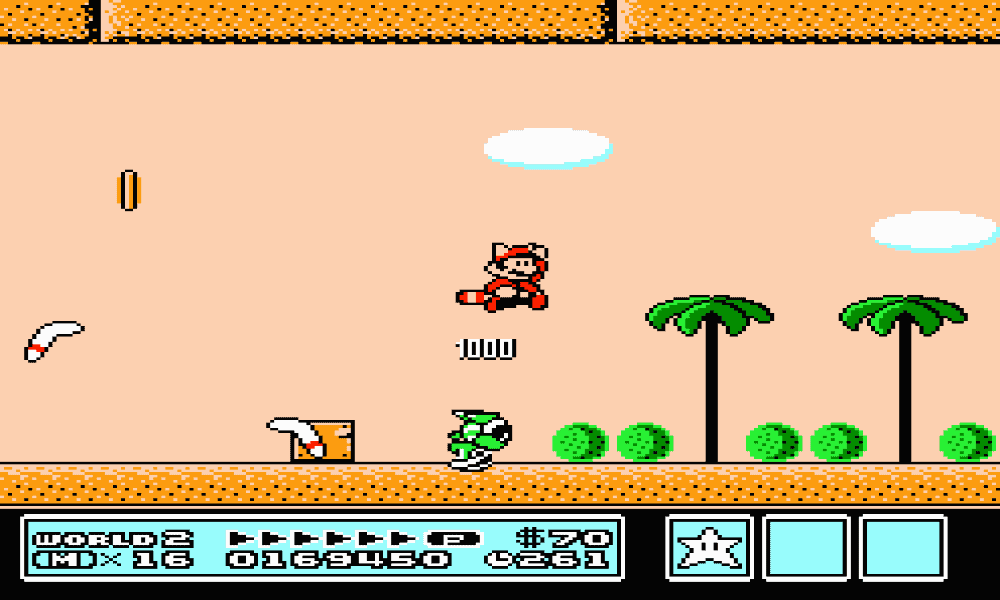
Super Mario Bros. 3 is one of those sequels that blows its predecessors out of the water. Super Mario Bros. was a monumental game for its day, but Super Mario Bros. 3 surpasses it in every single metric. Its graphics are some of the best on the NES, and it’s wild to see how much they have improved in only three years (or two years if you consider that the Japanese version of Super Mario Bros. 2 originally released in 1986 and had basically the same graphical fidelity as the first game). There are way more levels and you navigate through them using an overworld map. There are even more clever secrets than before. The power-ups are more varied and are super cool: leaves and tanooki tails to fly, the frog suit to swim easier, and the hammer suit to hurl hammers at enemies. The combination of ambitious innovation and flawless execution make Super Mario Bros. 3 a timeless classic and one of the few NES games that is just as enjoyable today as it was back then.
13. Uncharted 4: A Thief’s End (2016, PS4)
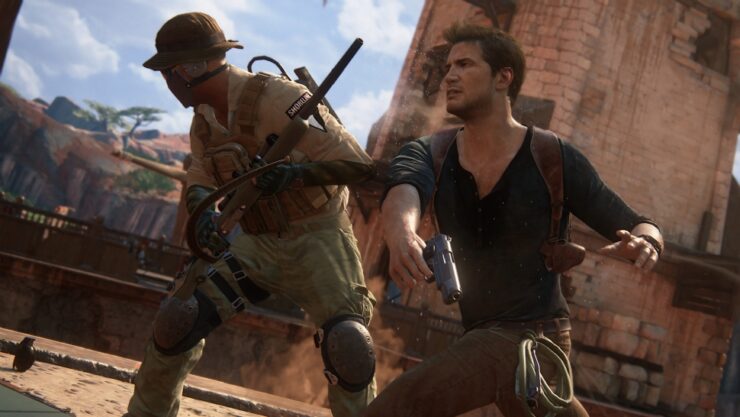
So, as you can see from my placement of Uncharted 2 on this list, I really loved that game. However, it’s follow-up, Uncharted 3: Drake’s Deception, was pretty disappointing to me: sure, the set-piece moments were better than ever, and there were some fun new characters, but the story felt like it was an after-thought, which made it by far my least favourite game of the trilogy. I figured that Uncharted 2 would remain the best of the franchise and that would be the end of it, but then a fourth game was announced for PS4. I was optimistic, but I really did not expect to love Uncharted 4: A Thief’s End as much as I did. The writing is the best in the franchise, bar-none, giving us a satisfying and mature end for these characters we’ve grown to love so much over the course of the series. The set-pieces are grander than ever, which is aided immensely by the improved technology since the previous game. The game also takes a cue from the Tomb Raider reboot, introducing some hub areas where you can explore and pick your next mission to complete. The game is also just gorgeous, putting its predecessors to shame in this regard (and those games were no slouches in the graphical department either). For the most part, Uncharted 4 is more of the same, but executed at the absolute best this franchise has ever seen.
12. The Last of Us (2013, PS3)
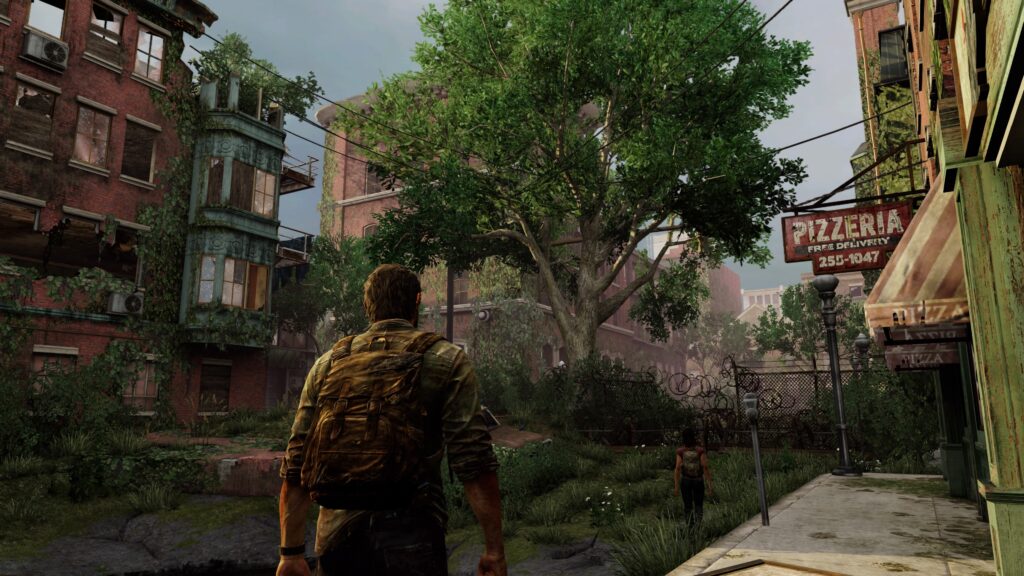
The Last of Us is one of those games that is so good that it transcended the gaming industry and is just part of the wider culture. This sombre, contemplative, depressing, and tragic story of a man and a girl travelling across a post-apocalyptic wasteland is easily one of the best-told narratives in the medium. Its ending is legendary, one of the most iconic in modern pop culture, and one which has been heavily-debated since it released (for my part, Joel did not do the right thing, and the Left Behind DLC is meant to make this unmistakably clear to the audience).
On top of this, I think that the gameplay is also very underrated. As opposed to Uncharted‘s bombastic action, the gunplay of The Last of Us is slower, more visceral and dangerous. You’ll often spend significant chunks of gameplay using stealth, avoiding alerting enemies as much as possible until you have to engage them. The cordyceps zombies also present a significantly different threat to the human survivors you come across, giving the game a survival horror tone. The way that you scavenge for supplies to craft make-shift weapons and items was also quite innovative for the time, and would be replicated for years after release by other games. This system encourages careful exploration and is done in such a way that you never have enough supplies to do everything you may want to. The Last of Us is Naughty Dog at their peak, flexing their development muscles to create an unforgettable experience.
11. Dead Space 2 (2011, PS3)
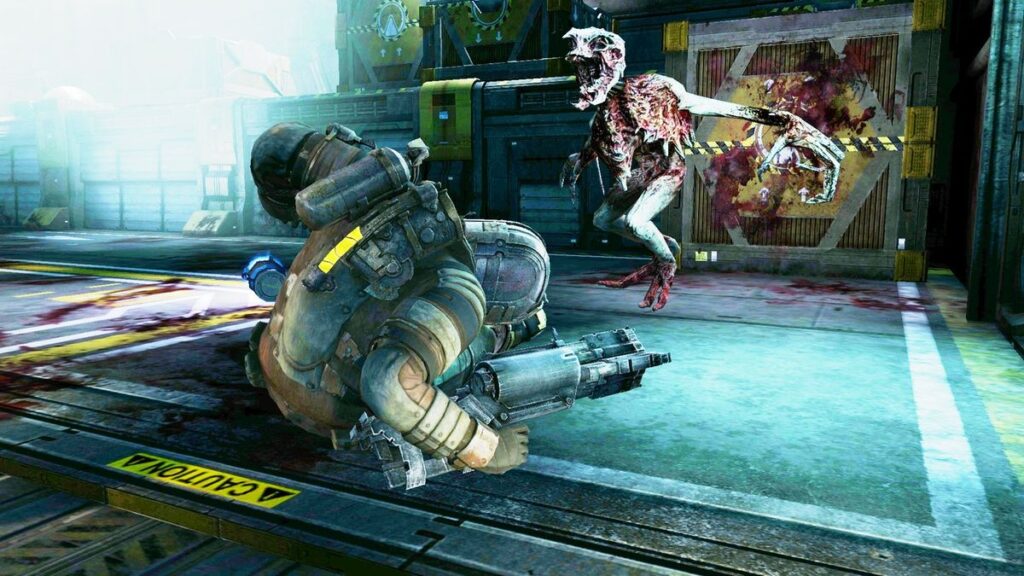
Your mom may hate Dead Space 2, but I love it. The game comes out of the gate swinging, featuring one of the most horrific and pulse-pounding opening sequences of any video game. The original game was already great, but Dead Space 2 ups the ante by bringing in more Uncharted-style bombastic action set-pieces. Contributing to this is that Isaac Clarke is no longer a silent protagonist, which allows him to have a lot more personality. This also enables the game’s more personal story, which sees him grappling with crippling PTSD and mental illness due to the events of the first game. Perhaps the most remarkable thing about all this though is that the game does all this without compromising the survival horror tone – this game is every bit as scary as its predecessor, while also being an action thrill-ride at the same time. The franchise’s core gameplay is every bit as compelling as before, but is now more refined and has more variety of weapons and enemies to keep combat fresh and endlessly replayable. Of all the new additions, my favourite is the Stalker enemies. While most necromorphs will attack the moment they spot you, Stalkers mess with your head like a pack of wolves. They’ll surround you, peek at you to see if you’re distracted, fall back if you get too close, and then scream like a banshee as they charge in for the kill. The first time I fought these guys, I was absolutely terrified, it was such a special experience. The Tormentor is also one of the coolest and most intense boss fights I’ve ever experienced, despite basically being an interactive cutscene.
10. Pokémon HeartGold (2009, DS)
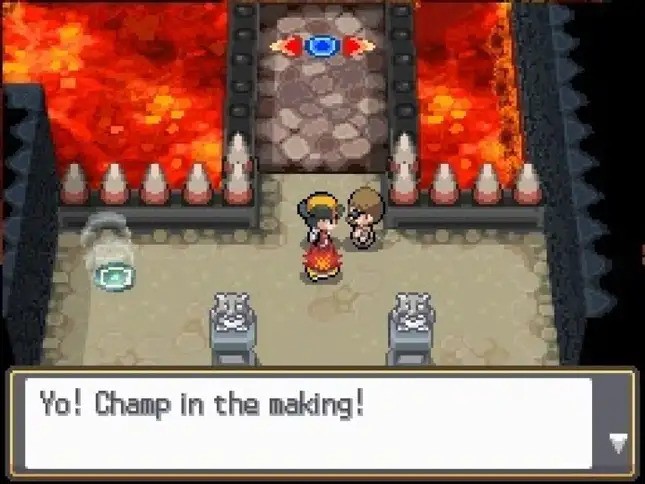
I played countless hours of Pokémon Gold and Silver back in the day, making them one of my favourite games in the franchise. I think that the fourth generation of Pokémon games were the peak of the franchise’s gameplay. Combine these two interests together and we have Pokémon HeartGold and SoulSilver, remakes of the gen two games utilizing the engine and mechanics of the fourth generation games. These games are the ultimate Pokémon adventure, full-stop. The difficulty is legitimately challenging, even for series veterans. The Johto region feels lived-in and steeped in history. The post-game in Kanto is expanded further as well, making this meaty second chapter even more impressive. Your favourite Pokémon follows you around on the overworld. It’s just the best rendition of the classic Pokémon formula, I don’t know how else I can describe it.
9. God of War (2018, PS4)

I’ve dabbled in the God of War games, but I haven’t gotten a chance yet to play through them all. However, I decided to try out the 2018 God of War and was surprised by just how good it was. While I do think that the story of the Greek God of War games is underrated and a lot more interesting than people give it credit for, God of War‘s 2018 entry is unrivalled in its writing. Maybe it’s just the timing of the game for me: I got this right after the birth of my son, so the tale of Kratos and his son, Atreus, on a journey to spread the ashes of Atreus’ mother really resonated with me. Seeing a more matured Kratos lends him so much more depth and sympathy – you can see how he’s trying to direct Atreus to not make the same mistakes he made. And then there’s the primary antagonist, Baldur: he looks like a drunken weenie the first time you see him, but he quickly demonstrates that he is incredibly dangerous, unhinged, and a legitimate threat to Kratos.
The game is also just gorgeous. The environments are breath-taking and I love all the colourful particle effects which just make the game look magical as you go on your Norse journey. The way that the game plays out like one long, seamless take keeps you immersed in this world.
The game also just plays well. I wasn’t sure if I’d like an over-the-shoulder melee system, but it actually plays about as well as the more traditional action game camera in the previous God of War games. It plays like a nice middle-ground between a Souls-like and a more traditional character action game. Kratos’ axe is also just the coolest melee weapon ever, allowing you to throw it and then have it fly back into your hand with the press of a button (hitting any enemy it crosses paths with on the way there for bonus damage). Combat is bloody, visceral, and satisfying. I particularly like the optional Valkyrie bosses hidden around the game world, which really test your skills and are a stiff challenge.
I loved my time with God of War. I rarely bother to platinum games, but I knew pretty early in that I was going to see it through for God of War. I loved this game so much that I had to see everything it had available, including all the optional challenge areas.
8. Dark Souls (2011, PS3)

Another example of “gameplay isn’t everything”. I think that Nioh is superior to Dark Souls in terms of its combat. However, I think that Dark Souls is, without question, the better game overall due to its less-obvious qualities. Of these, the best is the looping, open-world structure. Each area is designed like a linear level, funneling you through encounters until you reach a boss or the next area. However, many of these areas will connect to other areas, giving a sense of interconnectedness and geography to the world. There are several moments where you will reach a gate or an elevator, use it, and then be shocked to see that you’re now in an area you’ve already explored. The sense of verticality is also very unique, as the world is designed as a bunch of regions stacked on top of each other: at the bottom are the ancient, forgotten dregs of this world, while the top is the isolated, gilded realms of the gods themselves. That’s right, FromSoft have mastered world design so well that it’s even thematic. The game’s story presentation is also very unique, choosing to communicate it through the environment and item descriptions rather than an overt narrative. This intentionally leaves much of the story up to interpretation.
Of course, then there’s the combat system, which still influencing the industry to this day. It is relatively slow and deliberate, forcing you to carefully consider every action you make while balancing your stamina bar and limited healing resources. The enemy designs are inspired. Creatures like the Gaping Dragon, Pinwheel, and The Four Kings are such unique concepts, but so evocative and mysterious in their design. The difficulty is tough but fair. Pretty much anyone is capable of overcoming its challenges with a little perseverance and, if that fails, level-grinding.
Dark Souls is a game which just feels like a myth brought to life. Exploring and battling through its forlorn world is haunting, like you’re trespassing in a place you were never meant to be. Its difficulty may have been long surpassed by its successors, but it is still a good challenge and as satisfying as ever to overcome.
7. Bloodborne (2015, PS4)
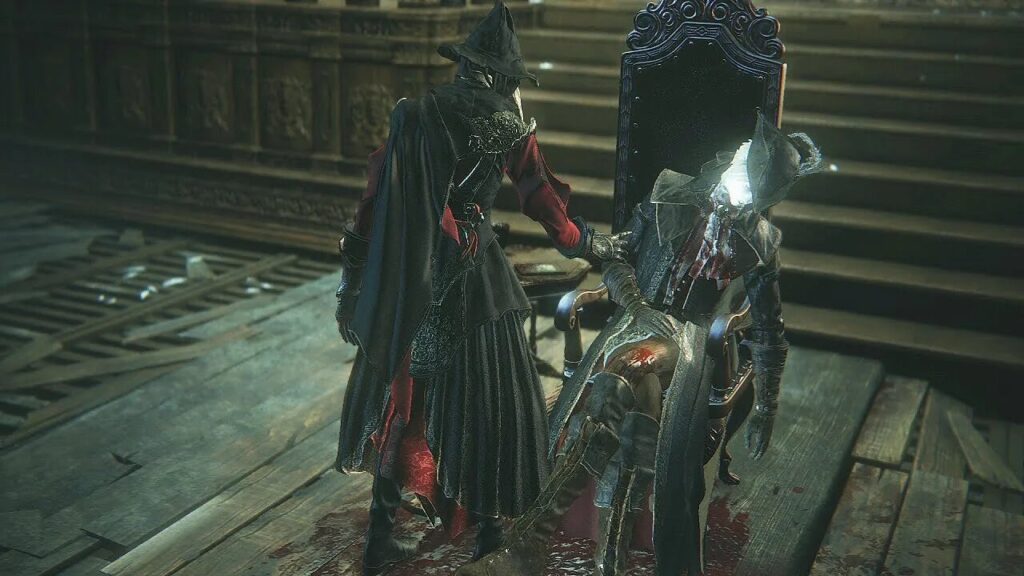
Bloodborne was my first Souls-like experience. Like Dead or Alive, this game came across my radar after completing the Ninja Gaiden games. I was looking for another game with challenging hack ‘n slash combat, and Bloodborne came highly recommended. With that in mind… I was not primed for the kind of experience that Bloodborne was offering. The combat was fast, but not as fast as Ninja Gaiden, and there was no way to block, so I kept getting destroyed by basic enemies. The gameplay wasn’t really “clicking” with me, but I decided to persevere. However, piece-by-piece, it started to click in place in my mind. The importance of shortcuts, parry and dodge timing, careful analysis of the area, and stamina management really started to settle in. Around two-thirds of the way in, I “got” it, but I still wasn’t blown away. However, this all changed in one moment: I bought the DLC, played through to Lady Maria of the Astral Clocktower… and I was stuck. She absolutely destroyed me multiple times. I tried to summon a co-op helper, but no one was answering my bell. I distinctly remember sitting there, waiting for minutes for someone to respond, when I decided: “Fine, I guess I’m just gonna knuckle-down then and do this myself.”
I died, over and over again. I must have done so over twenty times, but I was slowly learning more and more of Lady Maria’s moveset, getting her health down lower and lower as I went. When I finally managed to overcome her, it was like a deadly ballet between the two of us, and I felt a satisfaction that I had never felt in the game up to that point. I was changed, and I resolved to try to beat every Souls-like boss thereafter without summoning, if I could reasonably do so. It was the true start of my love affair with these games.
Like Blasphemous, Bloodborne is a game which ticks all my boxes. Souls-combat, but faster and more aggressive? Gothic and eldritch horror aesthetic? Blood? Fanatics? Goddamn fuckin’ werewolves!? Bloodborne is what you get when you take a solid gameplay foundation and then commit to a particular vision and aesthetic, elevating the game well beyond the sum of its parts.
6. Civilization VI (2016, PC)
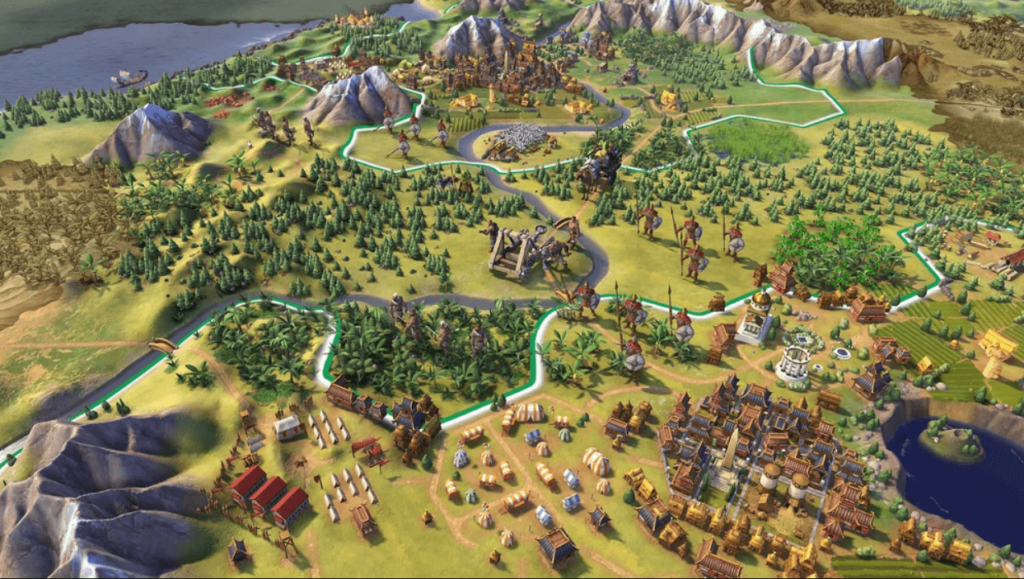
While I think I’d say that Civilization IV was the most fun I had with a single Civilization game, if I had to pick one of these games to play today, it’s Civ VI, without question. Starting with Civ V, Firaxis shook up the series’ formula in some pretty fundamental ways, moving from a grid to a hex-based map, and making cities far more specialized and customizable. While I wasn’t a big fan of Civ V, Civ VI plays like a more refined version of that game, but with several more features added. Shaping your nation and conquering the world through diplomacy, culture, religion, or good ol’ fashioned war is a lot of fun, and no two games will ever play out the same. There are also an overwhelming number of civilizations available to play, providing even more variety and incentives to play the game how you want. I also like how the game doesn’t really force you into picking one particular victory route early – it’s completely viable to wait until the modern era to really commit to a victory condition (unlike, say, Civilization: Beyond Earth, where you’re pretty much knee-capping yourself if you diversify your nation’s interests). The “just one more turn” gameplay is just as addictive as ever as you set goals for yourself and see them come to fruition over the course of the next few turns and there are lots of options to customize the game to your liking (including options for some pretty wild, alternative game modes).
5. Tetris (1989, NES)

Tetris is the definition of “simple, but addictive”. Drop shapes made up of four blocks, try to make lines with them to clear them out before they reach the top, you get more points if you clear more lines at once, and the game gets faster the more lines you clear. Good luck, and try to get the highest score possible.
There are lots of different versions of Tetris out there: they’re all great, and I really like the quality of life improvements that have been developed over the years, but the NES version was the one that first got me into the game. Whenever I start replaying Tetris, I can see the blocks falling in my mind where ever I go. I used to keep track of my scores in NES Tetris… I wanted to show off a bit, but I can’t find the text document anymore… As I recall, I used to be able to get to around level twenty-five when it starts getting too fast to react, and I’d get as many four-line-clears as possible up to that point.
4. Resident Evil 4 (2005, GC)
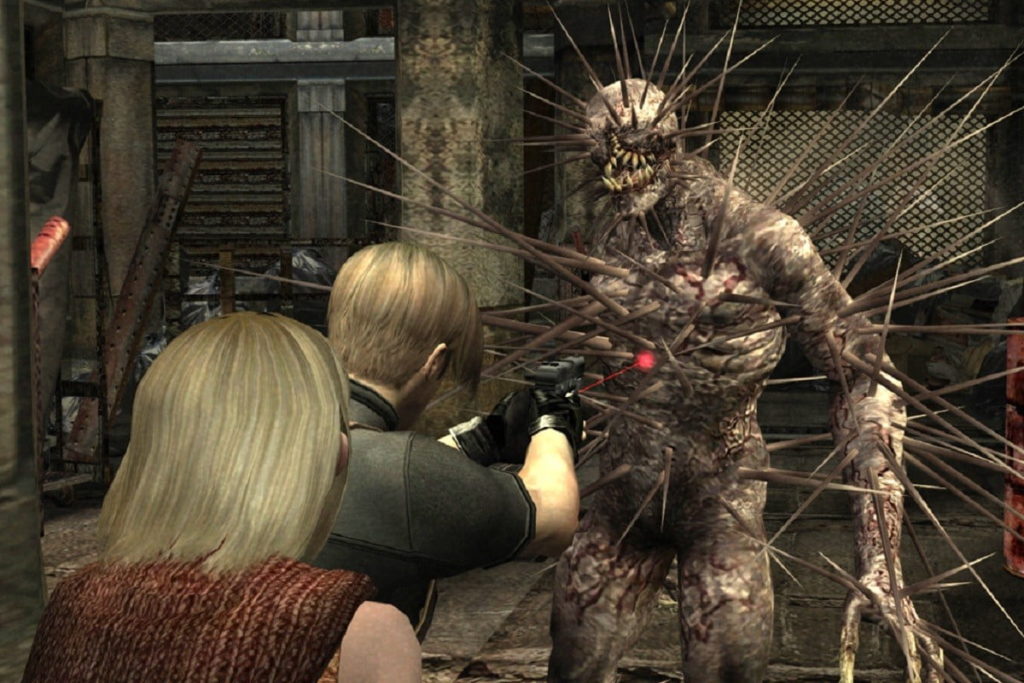
Resident Evil 4 is an incredible game. The ambition, innovation, and attention to detail on display is staggering. Resident Evil games had grown really stale at the time, so it came out at the perfect moment. What makes this more remarkable is that the game basically plays like a classic Resident Evil game, only with full 3D and manual aiming, but its changes make it feel like a wholly new thing. Its over-the-shoulder camera revolutionized third person videogames and resulted in numerous imitators for years thereafter. It established Leon Kennedy as an absolute badass. There are just so many things you can say about this game’s legacy, that you really can’t understate how important it was.
For my part, I owned a copy of Resident Evil 4 on PS2 back around 2008, but I hadn’t really gotten past the opening village battle. It wasn’t until 2021 when I started the Resident Evil Love/Hate series that I finally decided to commit to trying it out. While it took about an hour to get used to the controls, once I acclimated, I was stunned at just how refined this game was. The whole experience is so lovingly crafted and varied that it never gets boring, and the campy tone doesn’t diminish from the horror elements. Then there’s all the little, optional systems you can engage in: treasure-hunting to get extra currency, the gun range where you can win prizes for good shooting, and you can do tricks during the jet ski section. Hell, what other game makes inventory management fun!? There’s a reason why this game is still being re-released and remade twenty years later, it’s an essential pillar of the gaming landscape and a monument to fantastic design.
3. Baldur’s Gate 3 (2023, PC)
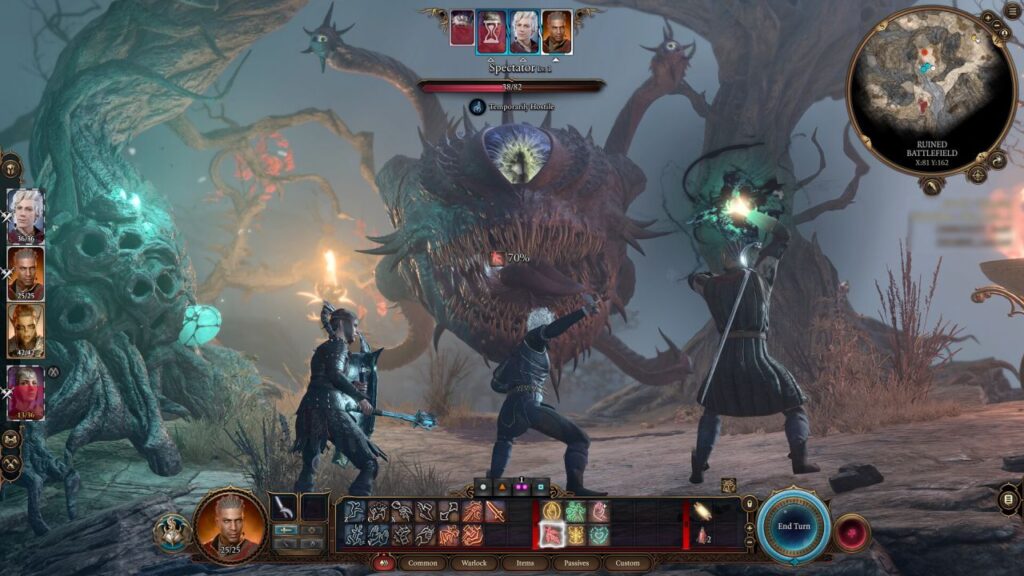
Back during the early-to-mid 2010s, video games liked to tell us that “your choices matter”. However, after scores of Telltale and Quantic Dream games, the Mass Effect trilogy, Fallout, etc, gamers came to realize the truth of the matter: making consequences matter in games is hard. If you give the player the ability to make a choice which could change the game world, it’s simply too much work to make that choice actually matter in the grand scheme of things. At most, you may create a short, branching path, but it will just lead back to the main path again. Have to choose to let one of two characters die? You can be sure that the one you saved with have basically no bearing on the plot, or they’ll do the exact same things the other character would have done anyway. Hell, Fallout will let you kill just about anyone, but if a character is actually important, you can shoot them as much as you want, but they’ll just fall unconscious and forget anything happened the next time you see them. Once you realize this, it really destroys the illusion and can make certain choices completely worthless when you encounter them. I remember distinctly feeling this in The Walking Dead: Season 2 when you had to choose which characters would live and die… effectively rending that character useless for the rest of the journey, since they could be dead in another player’s playthrough and it would be too much effort that half your player base will never see to give them a major role thereafter.
Baldur’s Gate 3 throws this conventional wisdom out the window. While the game’s narrative does move forward on a fairly linear track, the amount of influence you have over events is astounding. While it doesn’t offer nearly as much freedom as a proper, tabletop DND game, it comes unreasonably close to achieving that. Like, for the earliest example of this unprecedented amount of freedom: you come across a druid grove where tiefling refugees are staying. The relationship between the grove and the tieflings is extremely strained, but the tieflings can’t leave because the road to Baldur’s Gate is too dangerous due to raids by the Cult of the Absolute. As a result, they’re on the verge of committing violence to stay in the safely of the grove. Initially, you can pick a side to support, or you can choose to try to find a compromise. Or, later on, you come across the Cult of the Absolute, who are trying to kill both factions, and you can choose to side with them. The expectation is that you will find a peaceful solution, but if you want to side with the cult and massacre everyone, that is completely viable. In fact, an entire character and their unique storyline is locked behind this option. Hell, you can choose to kill everyone on all sides and the game will just continue to go along, locking off content as characters abandon your party and questlines become unachievable. Characters will even acknowledge all the unexpected little choices you make. And, if this isn’t ridiculous enough, the game is fully voice acted, meaning that the amount of work that has gone into planning for every eventuality players could make is mind-boggling. Most players will never see much of this content. Hell, there’s an entire world of animals and corpses you can talk to, but you will only ever see it if you cast “speak with animals” or “speak with dead”, respectively (and you really should, these interactions are amazing). Hell, when you do reach Baldur’s Gate, much of the populace are interactable, with dialog trees and fully voiced performances. Many of these characters are there for nothing more than flavour, and all it does is make the world more believable and lived-in. That is the scale of the work put into Baldur’s Gate 3, and the more you think about it, the more it defies comprehension.
That’s all well and good, but the game is also just really fun. Due to the level of freedom, you get to approach its turn-based combat system in whatever ways you see fit. You really come to love the characters here, customizing their abilities to suit your needs, and forming relationships with them as you advance their side-quests. Baldur’s Gate 3 is an unreasonably good game, the sort of experience that you simply cannot expect anyone else to one-up. It will be the sort of game that we point to even a decade from now as an unrivalled pinnacle of the industry and one that you can go back to over and over again and find new secrets each time.
2. Splinter Cell: Chaos Theory (2005, PS2)
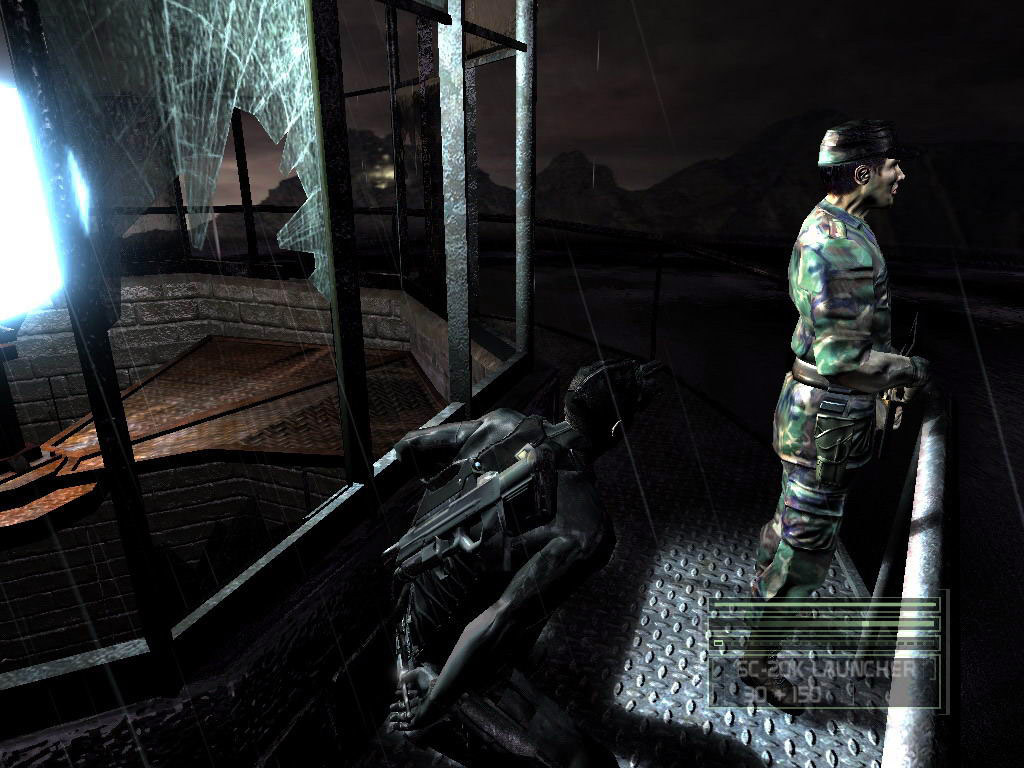
As I said in the Metal Gear Solid entry, I became interested in those games because of my love for Splinter Cell. When I was in my early teens, I bought Splinter Cell: Pandora Tomorrow at a street fair, and it began my love affair with stealth games. I loved it and made sure to pickup a copy of the original game shortly thereafter. With those two completed, we came to the newest game at the time: Chaos Theory. I had loved the previous two games, so I was super excited to get it… but, I couldn’t. See, Chaos Theory was the first Splinter Cell game to be rated M. My parents had a “no M-rated games” policy for us kids. I was only sixteen, I couldn’t wait another year to be old enough to play them! No, I was going to have to put my own roguish skills to the test…
So, one day when we were at Wal-Mart, I headed to the electronics section to look at the games. There was Chaos Theory, locked behind the game cabinet. I asked the clerk to get it out of the cabinet and ring it up. I figured he was going to ask me to verify my age, which would dash my plans, but he didn’t bother. I snuck it home and kept the game hidden so that my parents would never know that I had bought an M-rated game. My brothers and I were very good kids, so intentionally disobeying them like this was exciting and dangerous. It’s kind of silly, but it felt like I was the one sneaking about and pulling off secret missions without getting caught.
Chaos Theory plays much like its predecessors, but with some tweaks. These include a new noise meter, an EMP device for your sidearm, improved graphics and animations, smarter enemies, and a choice of lethal and non-lethal melee attacks. The missions are also really well-designed. Most famous of these is the bank heist near the start of the game, which is just a flawless example of thrilling game design. The level mixes infiltration, exploration, combat, and puzzle-solving in such a glorious blend. The voice cast are on top form here, especially Michael Ironside as Sam Fisher. His performance in this game makes Sam Fisher downright terrifying at times. Chaos Theory was the absolute peak of Splinter Cell, before Ubisoft felt that the series needed to be shaken up. As a result, we’ve never really gotten another game quite like it, making it a game that is still worth playing to this day.
1. Metal Gear Solid 3: Snake Eater (2004, PS2)

I love the writing. The political philosophizing stands side-by-side with big, dumb action sequences, and juvenile humour. The journey that Naked Snake goes on in this game is genuinely moving.
I love the characters. Naked Snake is the best Metal Gear character, bar none. The Boss is just incredible, and her motherly relationship with Snake adds so much emotional weight to the plot. EVA is a great Bond girl; enticing, but one who you never really think you can trust. Ocelot is a lot of fun when he shows up, I love that they gave him a more immature personality to match his age. Volgin is such a fun villain to hate; joyously evil and sadistic.
I love the boss battles. The obvious highlight is The End. The first time I came across him, I knew his reputation. I got shot by him almost immediately without even seeing him and decided right there to chicken out on the fight. I knew about the clock-skip trick, where you can win the battle automatically by moving your system clock forward a week, which causes The End to die of old age. I did it, but I didn’t feel good about it. Some time later when I replayed the game in the Subsistence re-release, I decided to knuckle-down and do the fight for real this time. I can distinctly remember running around lost for the first part of the fight, trying to figure out where The End was hiding. However, I soon began to realize all the ways you could pin-point his location, and soon it was a game of hunter vs hunter. I think it took me an hour and a half, but I gunned him down and felt the rush of satisfaction for overcoming such a creative and unique challenge.
I love the setting. A jungle in Russia is a pretty wild setting, but it’s so evocative. The jungle is the realm of predators, so being able to hunt enemies here makes you feel so cool. The setting also takes Metal Gear from the hallways and corridors they had been in up to that point. Levels are open, with lots of room to maneuver and pick your approach. You have to hide in plain sight, which is so much more badass than hiding in a locker.
I love all the ways you can mess with guards. For example, you can blow up their food supplies to make them hungry and vulnerable to eating poisoned food that you’ve left around. You can also blow up their ammunition stores so they can’t shoot you if you’re spotted. You can also throw a pissed-off, poisonous animal at them to get it to bite them to death.
I love the new survival elements. Having to hunt for food to sustain yourself really hammers home the idea that you’re an operative deep in enemy territory. I love how the camouflage meter facilitates the more open level designs without sacrificing the stealth gameplay.
I love the ending. Snake Eater has my favourite ending of any piece of media. The first time I played this game, I was blown away by the final boss fight and cutscene. It re-contextualized the game’s events and really made me question what I had done to get to this point. It’s beautifully acted and emotional. It’s the cherry on top of a perfect sundae.
If you liked this article…
I hate ads. You hate ads. In order to stop polluting my site with obtrusive and annoying ads, I’ve elected to turn them off on IC2S. That said, writing still takes time and effort. If you enjoyed what you read here today and want to give a token of appreciation, I’ve set up a tip jar. Feel free to donate if you feel compelled to and I hope you enjoyed the article! 🙂
